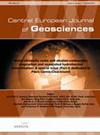Distribution, classification, petrological and related gochemical (SRA) characteristics of a tropical lowland peat dome in the Kota Samarahan-Asajaya area, West Sarawak, Malaysia
引用次数: 7
Abstract
Petrographic studies indicate that lateral variations in the decomposition levels of peat are associated with the predominantly occurring peat macerals. Source Rock Analyzer (SRA) results indicate lateral variation in peat organic matter types from type II to III and back again to type II, occurring laterally within the top 0-m to 0.5-m layer at the basin margin to the midsection and further towards the near-center areas of the peat dome. This variation is most likely caused by a combination of factors: (a) Horizontal zonation and lateral variation of the dominant species of plant assemblages (b) Fibric (marginal) peats and hemic to sapric peats associated with type II organic matter (kerogen). Sample organic matter (coal-equivalent kerogen) typing indicates that the relative abundance of phytoclasts and palynomorphs generally supports the organic matter classification obtained by the SRA method. Lateral variations in the peat organic matter types may support the lateral vegetation variation concept. The classification of peat organic matter types (interpreted from visual analyses of palynological slides) occurring from the basin periphery to the mid-section and further towards the basin center yields organic matter of type II to type III and mixed types II to III (coal kerogen-equivalent), respectively.马来西亚西沙捞越Kota Samarahan-Asajaya地区热带低地泥炭丘的分布、分类、岩石学及相关化学特征
岩石学研究表明,泥炭分解水平的横向变化与主要发生的泥炭显微物有关。烃源岩分析仪(Source Rock Analyzer, SRA)结果表明,泥炭有机质类型横向变化从II型到III型,再回到II型,横向分布在盆地边缘上0 ~ 0.5 m至中段,向泥炭丘近中心区域延伸。这种变化很可能是由多种因素共同造成的:(a)植物组合优势种的水平分带和横向变化(b)与II型有机质(干酪根)有关的纤维(边缘)泥炭和化学到辛辣泥炭。样品有机质(煤当量干酪根)分型表明,植物碎屑和岩相的相对丰度总体上支持SRA方法得到的有机质分类。泥炭有机质类型的横向变化可能支持植被横向变化的概念。泥炭有机质类型(根据孢粉玻片的视觉分析解释)从盆地外围到中部,再向盆地中心分布,分别为II - III型有机质和II - III型混合有机质(煤干酪根当量)。
本文章由计算机程序翻译,如有差异,请以英文原文为准。
求助全文
约1分钟内获得全文
求助全文
来源期刊

Central European Journal of Geosciences
GEOSCIENCES, MULTIDISCIPLINARY-
自引率
0.00%
发文量
0
审稿时长
>12 weeks
 求助内容:
求助内容: 应助结果提醒方式:
应助结果提醒方式:


